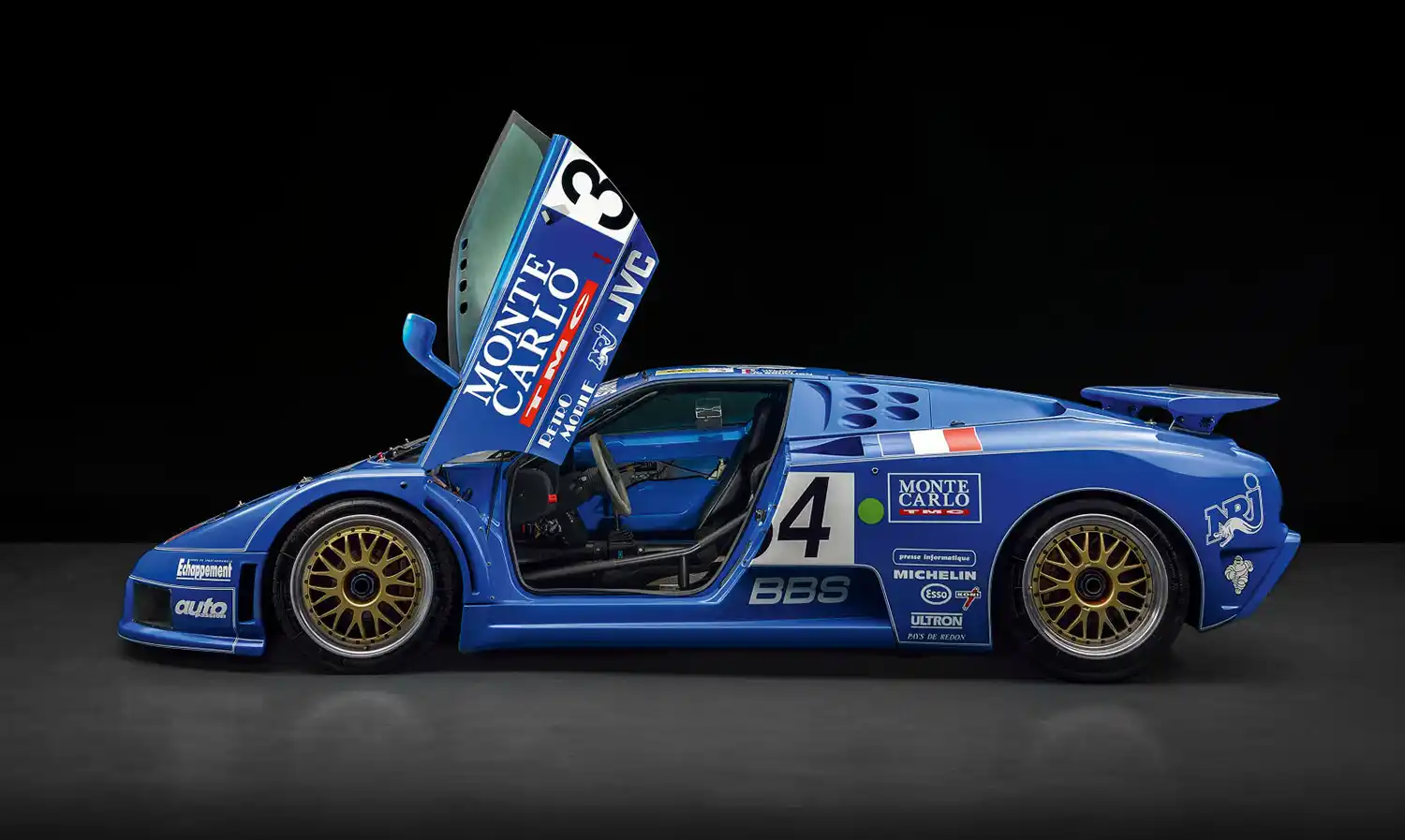
This year the Le Mans 24 hours race, perhaps the most famous test of car and driver in the world, celebrates its centenary. And in those 100 years of history, the legend of Bugatti is interwoven, right from the very first race in 1923.
In that inaugural year, Bugatti fielded two Brescia 16S cars, with one driven by Max de Pourtalès and Sosthène de La Rochefoucauld. The Brescia was a car renowned for its light weight and steadfast reliability, introduced at a time when many racing cars were large and unwieldy. Despite a race afflicted by rain for almost the whole 24 hours, the Brescia driven by de Pourtalès and de La Rochefoucauld secured a top-10 finish – a promising start that hinted at the formidable potential Bugatti could bring to the world of endurance racing.
Bugatti returned to the Circuit de la Sarthe, where the 24 Hours of Le Mans is run to this day, in 1930 with a Type 40, which was entered by private owner Odette Siko. Remarkably, Siko and her co-pilot Marguerite Mareuse competed as an all-female duo at a time when many believed women simply weren’t capable of completing such a grueling race. But with determination and skill, the pioneering pair were carried by their Bugatti Type 40 to a commendable seventh-place finish. Their exploits at Le Mans were just one example of daring women competing at the very highest levels in motorsport in Bugatti vehicles, with icons like Hellé Nice and Eliška Junkov joining them.
Over the ensuing years, Bugatti experienced mixed fortunes at the 24 Hours of Le Mans. Despite a series of solid performances – finishing sixth in 1932, ninth in 1934, and 14th in 1935 – all the ingredients for a Le Mans podium never quite came together. But that would all change in the most astonishing way in 1937.

As a response to the new regulations put forth by the organizers of the 24 Hours of Le Mans in 1936, Bugatti promptly commenced work on a new race car – the Type 57 Grand Prix. Later shorted to Type 57G, this car was designed for top-level motorsport, equipped with a 3,266cc in-line eight-cylinder engine, capable of delivering 170 PS. The car’s core structure featured a chassis punctured with holes in a meticulous process to save crucial weight. It was equipped with a full-width, streamlined magnesium-alloy body that encased even the wheels. This distinctive form led to the car being affectionately dubbed the “Tank”. On the iconic back straight of the Circuit de La Sarthe, it boasted a top speed of nearly 220 km/h (135 mph).
It was Jean-Pierre Wimille, the exceptional French driver, who wielded the full might of the Type 57G Tank to maximum effect. In 1937, partnered with Robert Benoist, one of the top French drivers of the interwar period, Wimille piloted the car to a stunning victory. They finished the race having travelled around 100km further than the second-place car, perfectly showcasing the technical genius and pioneering approach of Bugatti. The victory was not only Bugatti’s first win at Le Mans, but Wimille and Benoist also set a new distance record, covering an impressive 3,287 kilometers in a single race.
Wimille’s mastery of the Type 57 was far from exhausted. Although Bugatti had to pull out of the 1938 race with technical difficulties, in 1939, Bugatti and Wimille returned to the Le Mans circuit, this time with Pierre Veyron as co-driver, driving a development of the Type 57G.
Under the streamlined body of his Type 57C there was an upgraded 8-cylinder engine producing around 200 PS. This allowed for speeds of over 255 km/h on the straight and, through additional upgrades, Bugatti managed to reduce the weight of the round, pontoon shaped bonnet. The rear axle, crank shaft and other parts were also optimized.

From the start of the race, the Bugatti faced enormous competition from Raymond Sommer in a new Alfa Romeo. He led the race from the start, but the Bugatti pro drove exceptionally, taking clean lines in the curves while preserving his tires and brakes. Until late at night, the cars were driving with more and more speed. Sommer and Wimille’s fierce fight for first place was soon joined by Louis Gérad and Georges Monnert, drivers for Delage. But their race car could not withstand the strain: on Sunday morning, an engine problem forced them to stop in the pit lane. Meanwhile, Pierre Veyron drove on, pushing the Type 57 C ‘Tank’ lap after lap.
With a track distance of almost 13.5 kilometers per lap, Wimille and Veyron covered 3,354 kilometers – 248 laps – in 24 hours, which earned them an impressive victory. The Bugatti achieved an average speed of 139 km/h, the runner-up car of the race was three laps behind and the third car nine laps. Of the 42 cars that started, only 20 crossed the finish line. Ettore Bugatti would later claim that during the race, the mechanics never once had to open the bonnet, since the 8-cylinder engine was so reliable.
The start of World War 2 marked the beginning of a ten-year hiatus for the 24 Hours of Le Mans. A Bugatti wasn’t seen at the world-famous race until 1994, exactly 55 years after the last victory for the brand from Molsheim. The car in question was an EB110 Super Sport which, unfortunately, suffered an accident caused by a technical problem and couldn’t complete the race.
This year, as the 24 Hours of Le Mans celebrates its centenary, Bugatti appears at the Circuit de la Sarthe once more, with the dynamic public debut of the Bolide, driving a track lap on Saturday afternoon.





The post The history of Bugatti at 24 Hours of Le Mans appeared first on Wheelz.me-English.




